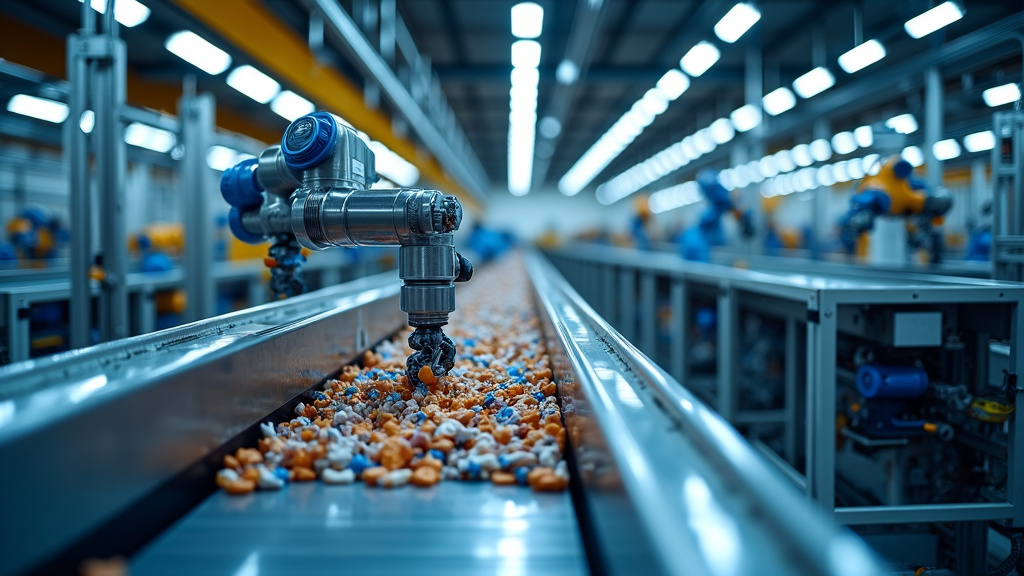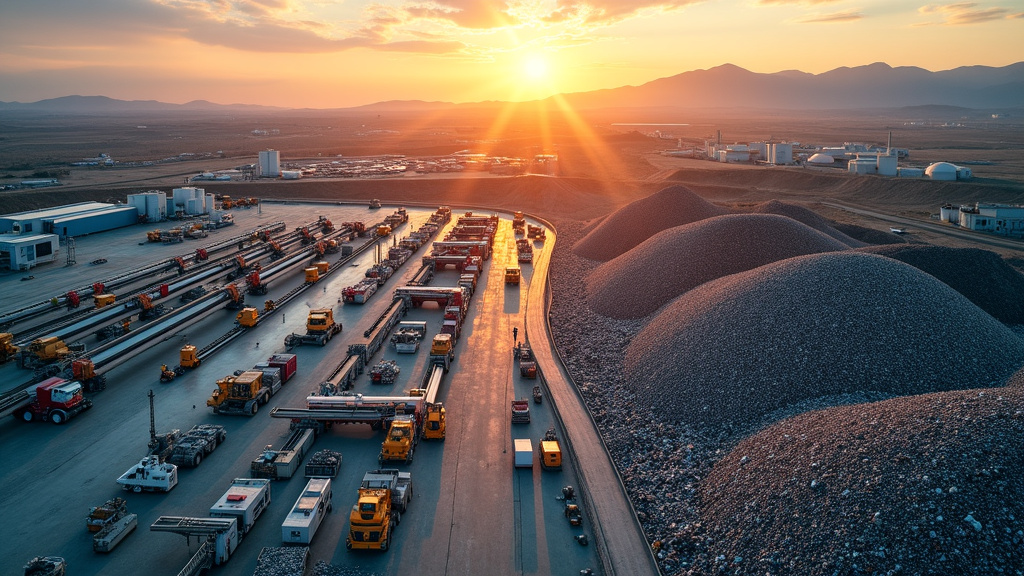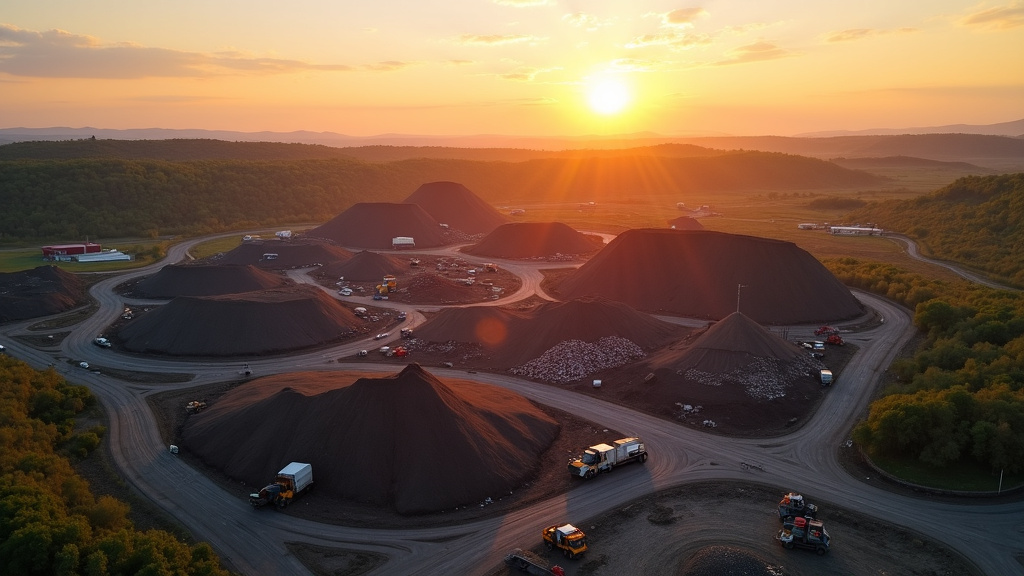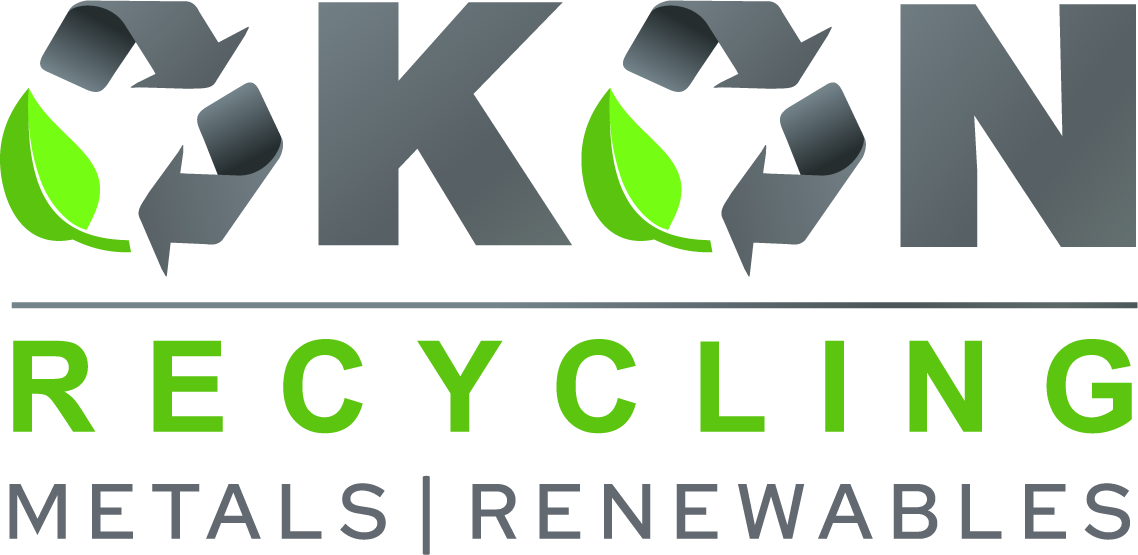5901 Botham Jean Blvd, Dallas, TX 75215
Cost Analysis: Recycling vs. Landfill – An Overview
February 12, 2025Have you ever wondered where your trash really goes after you throw it away? The way we manage waste has major economic and environmental consequences—affecting everything from municipal budgets to long-term sustainability. As landfills reach capacity and recycling technologies advance, it’s time to examine the true financial and ecological costs of waste management.
Recycling and landfill disposal take vastly different approaches. While landfills have long been the default, recycling programs are emerging as smarter, more sustainable alternatives. But which is truly more cost-effective?
At first glance, landfill disposal appears cheaper, but the hidden costs—land use, environmental degradation, and long-term maintenance—can be staggering. Recycling programs require investment upfront but offer long-term savings, resource conservation, and reduced environmental impact.
At Okon Recycling, we help businesses and municipalities reduce landfill reliance by offering efficient recycling solutions that lower costs and maximize material recovery. Our expertise in waste diversion and resource recovery ensures that recyclable materials remain in use—reducing both financial waste and environmental harm.
This article breaks down the cost dynamics of recycling vs. landfill disposal, highlighting how technological innovations and smart waste management strategies are shifting the economic balance.
Recycling Process Efficiency and Advancements

The recycling industry is experiencing a technological revolution that is transforming material processing and recovery. Advanced sorting technologies and innovative processing methods are significantly improving recycling efficiency and material recovery rates.
Leading this change are AI-powered optical sorting systems. These advanced machines use high-resolution cameras and machine learning algorithms to quickly identify and categorize recyclables based on visual characteristics. According to RecyclingInside, AI-driven optical sorters can accurately differentiate between various plastics, papers, and metals – a task that was once labor-intensive and error-prone.
Near-infrared (NIR) technology also represents a significant advancement in sorting capabilities. NIR sensors detect the unique spectral signatures of materials, allowing for precise identification and separation. This technology excels at sorting different types of plastics, addressing a challenging aspect of the recycling process.
Robotic Revolution in Recycling
The integration of robotics into recycling facilities marks a significant shift in material handling and sorting. Advanced robotic systems equipped with AI algorithms and precision gripping technology can effectively manipulate and sort items on conveyor belts. These robotic arms are programmed to identify and pick specific materials, contributing to more accurate and high-speed sorting.
The benefits of these technological advancements extend beyond increased sorting speed. They also lead to higher purity levels in recovered materials, crucial for downstream recycling processes. By reducing contamination, these technologies enhance the market value of recycled materials and facilitate more effective recycling overall.
While the initial investment in these advanced technologies can be substantial, the long-term benefits in terms of operational efficiency and material recovery rates are significant. Recycling facilities that have implemented these systems report higher throughput, reduced labor costs, and improved quality of recovered materials.
| Advantage | Advanced Recycling | Conventional Methods |
|---|---|---|
| Greenhouse Gas Emissions | Lower emissions compared to primary virgin naphtha production | Higher emissions |
| Energy Use | Reduced energy use | Higher energy consumption |
| Material Recovery | Transforms hard-to-recycle plastics into feedstocks | Limited recovery capabilities |
| Circular Economy Contribution | Contributes positively in all reviewed LCAs | Less contribution |
Chemical Recycling: A Game-Changer for Plastics
Beyond sorting technologies, chemical recycling is emerging as a promising solution for dealing with plastic waste. This innovative process breaks down plastics into their chemical components, allowing for the creation of new materials or fuels. Chemical recycling offers a way to recycle complex or contaminated plastics that are difficult to process using conventional methods, expanding the range of recyclable materials and reducing waste.
The success of these technological advancements relies not just on their implementation but also on public awareness and participation. Efficient recycling programs depend on consumers properly sorting their waste and understanding what can and cannot be recycled. As recycling technologies evolve, so must public education efforts to ensure these advancements translate into real-world improvements in recycling rates.
Looking to the future, the continued development and adoption of these technologies hold the promise of creating a more circular economy. By improving the efficiency and effectiveness of recycling processes, we can reduce our reliance on raw materials, minimize waste, and move closer to a sustainable future.
Comparing Costs: Landfill vs. Recycling Benefits

In waste management, the debate between landfill disposal and recycling often centers around cost-effectiveness. Although landfills may initially appear cheaper, a closer examination reveals that recycling can offer significant long-term financial benefits, especially when considering environmental impact and resource recovery.
Let’s examine the costs associated with both methods. Landfills require substantial initial investment for land acquisition, permits, and infrastructure. Ongoing expenses include daily operations, maintenance, and environmental monitoring. These costs can escalate over time as available land becomes scarcer and regulations tighten.
Recycling, conversely, involves initial costs for collection systems and processing facilities. However, it generates revenue through the sale of recycled materials and creates jobs in the recycling industry. According to the U.S. Environmental Protection Agency, recycling and reuse activities in the United States accounted for 681,000 jobs and $37.8 billion in wages.
Environmental Impact and Externalities
Considering environmental externalities, the cost equation shifts dramatically in favor of recycling. Landfills contribute significantly to greenhouse gas emissions, particularly methane, a potent climate change accelerator. The environmental cost of these emissions, though not always reflected in immediate financial terms, represents a substantial long-term liability.
Recycling reduces the need for raw material extraction, conserves energy, and minimizes pollution. For instance, recycling aluminum saves about 95% of the energy required to produce new aluminum from raw materials. This energy savings translates to reduced carbon emissions and lower environmental impact costs.
Resource recovery is another crucial factor that favors recycling. By reclaiming valuable materials from waste streams, recycling helps conserve natural resources and reduce the economic and environmental costs associated with extracting and processing new raw materials.
Real-World Examples
Several real-life examples demonstrate the long-term cost-effectiveness of recycling over landfill disposal. In South Korea, a country with limited land space, aggressive recycling policies have not only reduced waste sent to landfills but also created a thriving recycling industry. The country achieved a recycling rate of over 80% by 2019, significantly reducing landfill costs and environmental impact.
Similarly, the city of San Francisco has shown that high recycling rates can lead to economic benefits. By implementing comprehensive recycling and composting programs, the city achieved an 80% waste diversion rate, reducing landfill costs and generating revenue from recycled materials.
While the initial investment in recycling infrastructure can be substantial, the long-term savings and environmental benefits make it a more cost-effective solution than landfill disposal. As we continue to grapple with waste management challenges, it’s clear that recycling offers a path to both economic and environmental sustainability.
| Year | Cost to Recycle (per ton) | Cost to Landfill (per ton) |
|---|---|---|
| 2000-2001 | $427.63 | $603.80 |
| 2013-2014 | $351.29 | $717.11 |
Economic and Environmental Impact of Landfills

Landfills have long been a primary solution for waste management due to their relatively low initial costs. However, this apparent cost-effectiveness conceals numerous long-term economic and environmental issues that communities must address for decades. Exploring the true impact of landfills reveals that their consequences extend far beyond simple waste storage.
A major concern is the emission of methane, a potent greenhouse gas. According to the EPA, landfills are the third-largest source of human-related methane emissions in the United States. This significantly contributes to climate change and represents a missed opportunity for energy recovery.
Environmental repercussions of landfills include more than air pollution. Leachate, a toxic liquid formed when water filters through waste, poses a severe threat to soil and groundwater quality. Despite modern landfills’ sophisticated liner systems, the risk of leakage remains a constant concern for nearby communities and ecosystems.
Land Use Challenges and Economic Implications
A visible impact of landfills is their large land footprint. As urban areas expand, suitable land for waste disposal becomes scarce, increasing landfill operation costs. This scarcity affects waste management budgets and limits land use for more productive purposes, such as agriculture, housing, or conservation.
The economic burden of landfills extends beyond operational costs. Property values near landfills often decline, impacting local economies and reducing tax revenues. Additionally, long-term maintenance and monitoring of closed landfills create ongoing expenses for communities long after they stop accepting waste.
Health concerns associated with landfills further compound their economic impact. Increased rates of certain health issues in communities near landfills can lead to higher healthcare costs and reduced quality of life, creating a hidden economic drain on affected populations.
Sustainable Alternatives and the Path Forward
In light of these challenges, many communities are adopting more sustainable waste management solutions. Recycling stands out as a promising alternative, offering both environmental and economic benefits. By diverting materials from landfills, recycling reduces methane emissions and conserves valuable resources.
The recycling industry also presents significant economic opportunities. The EPA’s Recycling Economic Information (REI) Report highlights that recycling and reuse activities in the United States accounted for 681,000 jobs and $37.8 billion in wages. This demonstrates the potential for creating green jobs and stimulating local economies through sustainable waste management practices.
Composting organic waste is another viable solution that addresses methane emissions while producing valuable soil amendments. By implementing comprehensive recycling and composting programs, communities can significantly reduce their reliance on landfills and move towards a more circular economy.
The Role of Policy and Innovation
Transitioning away from landfill dependence requires supportive policies and innovative technologies. Extended producer responsibility (EPR) programs, which make manufacturers responsible for the entire lifecycle of their products, can incentivize the design of more recyclable and sustainable goods.
Advancements in waste-to-energy technologies offer another avenue for reducing landfill usage while generating renewable energy. Although not without its own environmental considerations, modern waste-to-energy facilities can process non-recyclable waste more efficiently than traditional landfills, with lower greenhouse gas emissions.
As we confront the economic and environmental impacts of landfills, it’s clear that a paradigm shift in waste management is necessary. By embracing recycling, composting, and other sustainable practices, communities can mitigate the long-term costs of landfills while moving towards a more resilient and environmentally friendly future.
Sustainable Waste Management: A Forward Look

As environmental challenges grow, sustainable waste management is more critical than ever. Recycling is not just a necessity—it’s an economic driver, supporting over 681,000 jobs nationwide and contributing significantly to the U.S. economy. Companies like Okon Recycling are proving that waste reduction isn’t just possible—it’s essential for a sustainable future.
Innovation is shaping the next era of waste management. From smart waste systems and IoT-driven efficiency to blockchain transparency in recycling, technology is revolutionizing how we handle materials. The circular economy is gaining momentum, emphasizing product durability, reuse, and closed-loop recycling—a shift that benefits both businesses and the planet.
At Okon Recycling, we go beyond conventional recycling. Our Dallas facility specializes in recovering materials many consider unrecyclable, including construction chillers and industrial magnets. By pushing the boundaries of recycling, we turn waste into a valuable resource, reducing landfill reliance and driving sustainability forward.
The future of waste management depends on collective action. Whether you’re an individual improving recycling habits or a business seeking innovative waste solutions, every effort counts. Join us in building a cleaner, greener future.
For expert recycling solutions, contact Okon Recycling at 214-736-9509. Let’s redefine waste—together.
